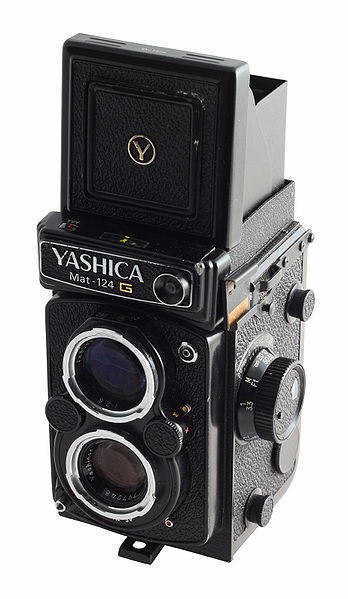A couple of recent interactions reminded me just how stuck in the last century many newspaper people continue to be.
Here we are, 10 percent of the way through the 21st century, and we're still thinking like it's 1999.
Or 89, 79 or even 69.
I started out as a photographer, way back in high school. My dad loaned me his camera, a 120-rollfilm Yashica twin-lens reflex.
When others were looking through the prism of a Pentax or Nikon SLR, I was walking around looking straight down at the clumsy ground-glass display, which flopped the image so that left was right and right was left. The glass had red lines inscribed, dividing it into a grid of thirds. To focus carefully, there was a flip-up magnifying glass. I had no strobe, shot exclusively with available light, and often used a tripod.
It was extraordinarily good training. I was looking down at a photograph, or potential photograph. I wasn't looking through a viewfinder at a subject. The connection with everyday reality was broken, substituting a connection with form and shape, tone and light. The inscribed lines subtly guided me to use the rule of thirds in composing the shot. I learned to crop with the camera, to use depth of field to isolate and draw attention to my subject, and to think before shooting, since there were only 12 frames on a roll of expensive film.
We all use mental models to deal with a complex world -- our brain even uses models to make sense of what our eyes tell us. Where we fail is in desperately holding onto those models where they're not appropriate.
The publisher who wants to charge by the word for classified ads, or the tech manager is afraid of open-source software, or the journalist who wants to write newspaper stories once a day as if it's 1969, are just like the photographer who fails to let go of the subject and embrace the image. The photographer's failure will be a poorly composed image. The publisher's and the tech manager's and the reporter's failures could be the end of their business and/or their jobs, as more nimble and creative competitors help the community route around their obstruction.
When a newspaper person looks at the Web or the iPad or a smartphone and sees a new way to express an "online newspaper," he or she is like the amateur photographer who looks through the viewfinder and sees Uncle Bill, not a photographic composition. We have to learn to let go of the familiar and explore the thing as it is.
It's a very hard habit to break. I wish there was a 120-rollfilm twin-lens reflex that would help people who grew up with print gain a feel for the digital landscape, with all its wonderful potential, but maybe there just isn't one.

